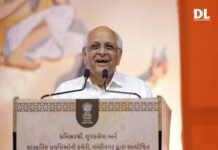All the 2,600 schools in the state of Kerala making the shift from Microsoft to Linux. Each of the state's 1.5 million high school students will grow accustomed to working not in the Windows environment familiar to computer users worldwide, but in Linux. And over the next two years, computer science based on Linux software will be made mandatory in all of the state's high schools.
Two years ago, New Delhi said the best way to improve computer literacy in India was to adopt open source software in schools. Although Kerala is the first to introduce such a program statewide, 18 of India's 28 states either are using Linux or have pilot projects for its use in various government departments and schools. The education ministries in most states, and in Delhi the federal ministries of defense, transport, communication, and health, are all using the software on server computers. And eight state governments have put their treasury operations on Linux, while the western state of Maharashtra is using it to revamp health-care systems.
So far, most of the progress of Linux has been in server software, programs that government agencies and businesses use for their Web sites, payroll, and other key tasks. In June, Microsoft Corp. had 68% of the server market, vs. Linux' 21%, compared with 70% for Microsoft and 11% for Linux two years ago. The desktop is a different story: Just 3% of India's PCs use Linux. Still, that's about triple the level in the U.S.
Unlike proprietary software from companies such as Microsoft, Linux is based on an open-source model. That means its code is available to developers worldwide, who can tweak it to make it better or adapt it to their own needs. Since the software itself is often given away for free, revenue numbers for Linux don't add up to much. Researcher IDC (IDC) estimates that the Indian Linux market will grow by 21% annually, to $19.9 million in 2010, mostly for services provided by companies such as Red Hat (RHAT), IBM, and locals like Wipro (WIT) and Tata Consultancy Services. That's a modest amount compared with Microsoft's Indian sales of nearly $200 million last year. But Microsoft's lost opportunity is still substantial, since it sells Windows at $50 or more per copy to makers of PCs and servers, and then it typically sells other programs that run on top of it.
The shift in government has spurred more businesses to use Linux, too. One convert is state-owned Life Insurance Corp. of India, which in 2005 switched its servers to Linux. With the $2 million in savings from using the free software, LIC is adding more computers. Today it has 70,000 PCs, all running Linux, and by next year it expects to have more than 100,000. Others are taking a more measured approach. Eighteen months ago, when Bombay-based Unit Trust of India wanted to set up a call center, the bank settled on Linux for its servers even as it continues to use Windows on its PCs. The bank is putting its credit-card system on Linux as well.


















